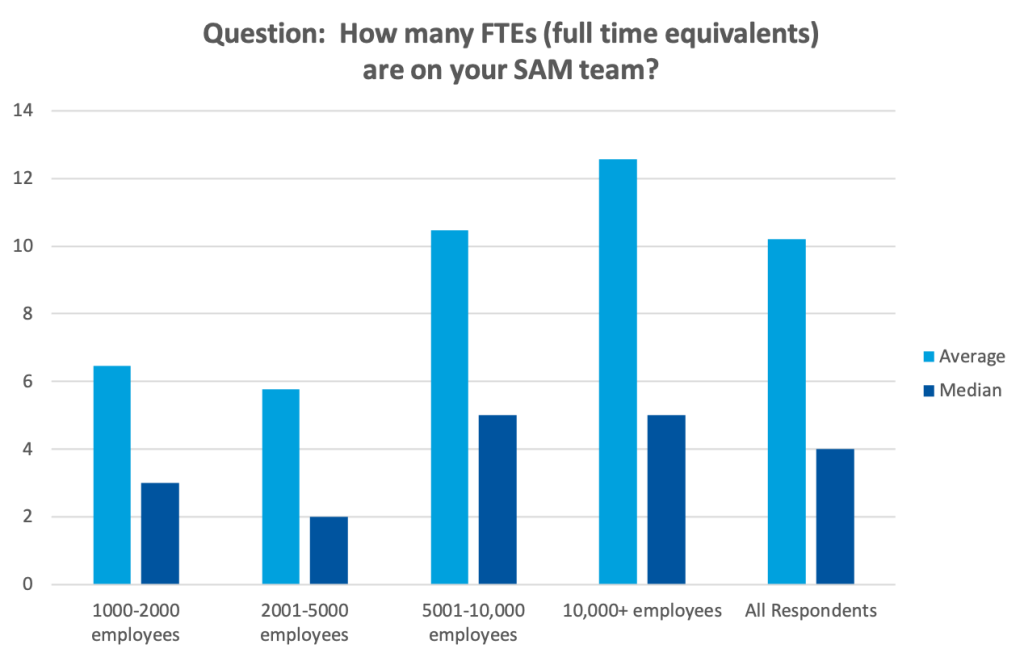How many FTEs should be on my SAM Team?
There may not be a one-size-fits-all answer, but Flexera's 2021 State of ITAM Report has the data to help you make an educated decision.
Published on 30th November 2021
Many organizations ask us, “How many people do I need on my SAM team?” Although there’s no one-size-fits-all answer, Flexera does have quantitative data on the average and median size of SAM teams across more than 20 industries.
In the Flexera 2021 State of ITAM Report, we asked respondents about the number of full-time equivalents (FTEs) on their SAM team. The responses varied widely from companies of all sizes, maturity levels and SAM tools in use. On the low end, there were three respondents in the survey who have zero FTEs on the SAM team. On the high end, there were six respondents who reported more than100 FTEs on the SAM team.
The average number of FTEs on the SAM team from all 461 respondents was 10.2. The median number of FTEs on the SAM team was four. The respondents who reported using spreadsheets as a SAM tool reported two more FTEs than average. The respondents who reported using their ITSM tool for SAM reported an average of three more FTEs than all other respondents.

Factors to consider when sizing your SAM team:
How much data do you need to manually input?
Organizations that need to manually input software licenses, product use rights, purchase orders and software signatures/models will need more FTEs than organizations with access to libraries such as product use rights, SKU and application recognition.
How many vendors, products and environments will you actively manage?
Leveraging market data and content libraries enables organizations to actively manage and optimize more vendors across on-premises, SaaS and the cloud. Organizations that rely on manual data input will not be able to manage as many vendors, leading to fewer optimized vendors and increased compliance risk. A vendor-stratification exercise (based on spend, audit propensity, strategic alignment, etc.) ought to inform which vendors the organization should actively manage.
How many manual processes do we have?
And more importantly, what processes can be automated? Don’t assume a process or workflow can solve the problem. Many workflows are actually sequences of manual tasks ultimately resulting in increased resource needs.
What are the goals and KPIs of the overall SAM program?
SAM program goals, reporting metrics and ROI targets should inform how many resources are required to meet the objectives. Organizations who establish clear business outcomes for the SAM program can back into resources required to meet those goals and show positive ROI of the SAM program.
Enriching your SAM program with libraries and market data enables you to eliminate the manual data input that strains resources.












